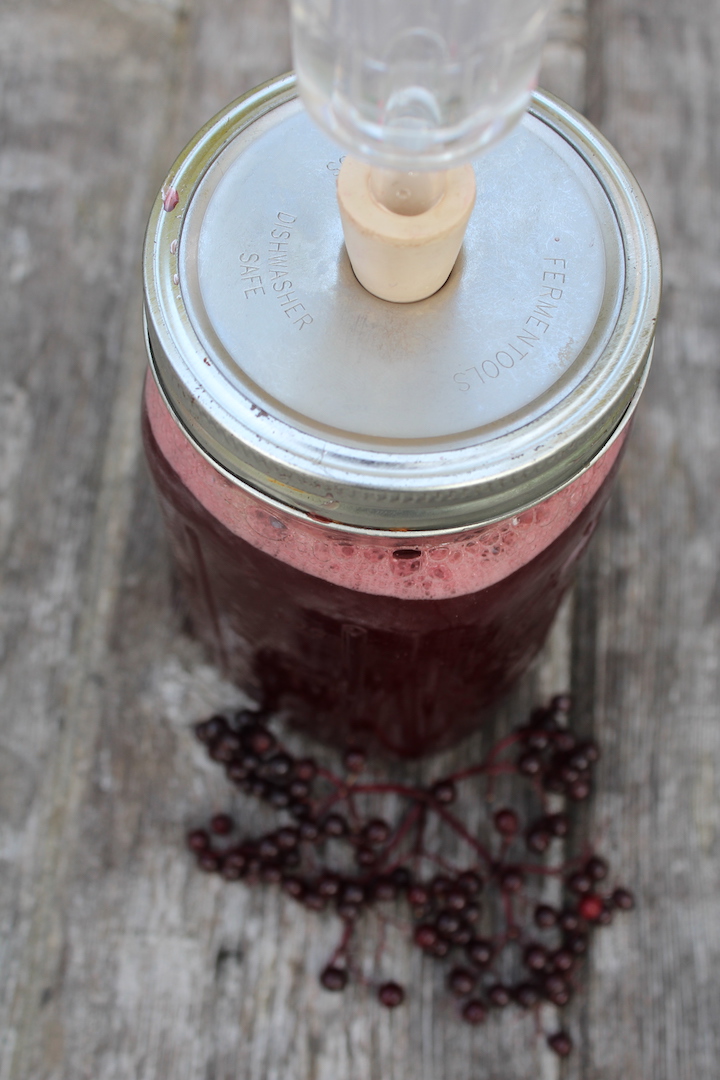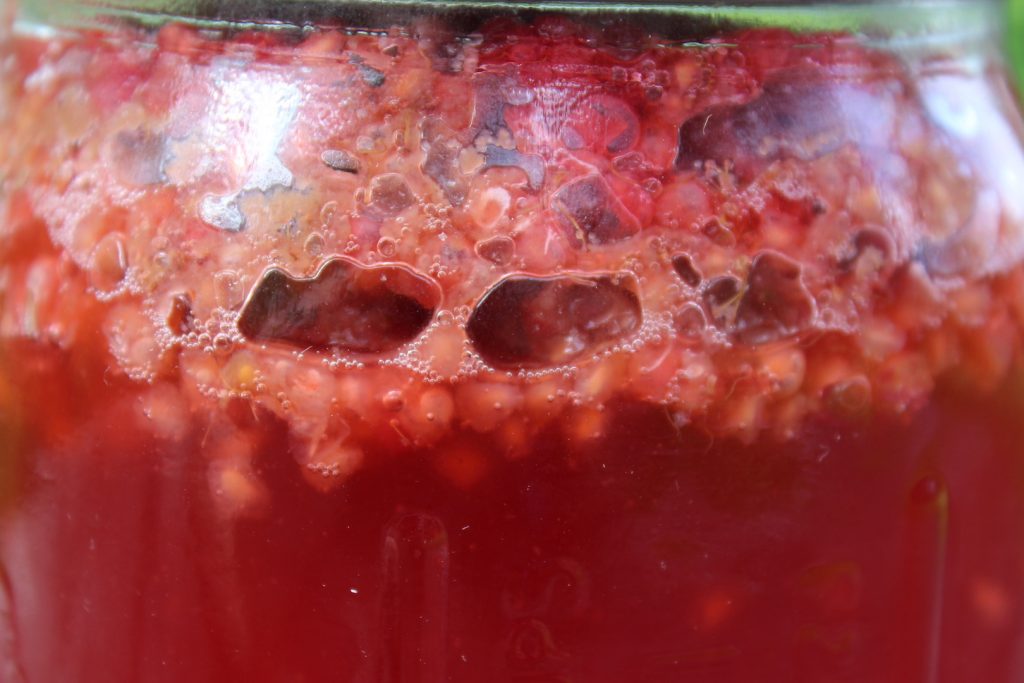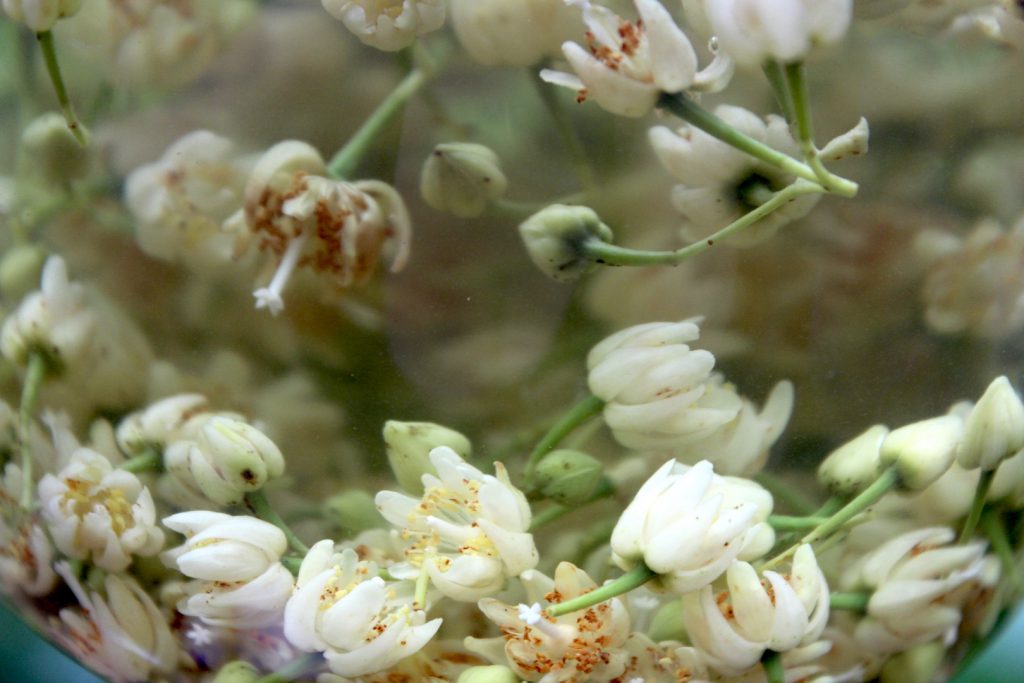These days, home brewers generally make mead in either 1 gallon or 5 gallon batches. Why? Mostly because that’s how the equipment is setup. Brewing vesicles, or carboys, come in one gallon or five gallon sizes, and the available equipment shapes how we brew.
Fermentation equipment is evolving. With the increased interest in home lacto-fermentation, there’s been a lot of innovation that helps both lacto-fermenters and home brewers alike. New small scale fermentation kits that adapt mason jars into home fermentation vesicles are readily available. With a mason jar fermentation kit, any wide mouth mason jar (pint, quart or half gallon) can be turned into a fermentation carboy for your own micro batch meads.
There are a lot of reasons to scale down your batch and make micro brew quantities. Depending on the brew, as little as a pint may be appropriate for medicinal brews or something experimental. If you don’t need convincing, here’s a basic primer on how to make your first 1 quart batch of mead. Otherwise, read on…

1. You Love to Brew
Once you get started home brewing your hobby can quickly spiral out of control. Mead making is fun and relatively easy, and if you’re anything like me, once you get started brewing you’ll try to ferment just about anything that will fit into a carboy. After just a few years of home brewing, an inventory of our basement mead cellar found over 200 bottles!
How could this happen? It’s going to be along time before we drink through that many bottles. Even though most batches were great, we’ve actually made way more than we want to drink. It’s a sad thing when you find yourself excited to make a home brew, but cant because you’ve put yourself on brewing restriction. Don’t let that happen to you!
2. You Want to Experiment
Want to try something particularly strange and see how it goes? How about switching out the honey and trying an agave nectar and lime ferment? That one in particular you can skip. We made it. It was horrible. Now we have lots of extra bottles full of that funk that nobody wants to drink.
By starting with a very small batch, you can test out flavors and proportions without wasting a lot of ingredients.
3. You Like Brewing More Than Drinking
Regardless of how much or little you like to drink, if you love to ferment and craft unique home brews then your brewing desire might well outpace your ability to drink it all. Sure, you can host parties or give your extra brews away to your friends, but scaling back might be better for everyone’s liver in the long run.
4. You’re Making a Messy Batch
Brewing carboys are notoriously hard to clean. A narrow neck is great to reduce the amount of surface air in the fermenter, but after you’ve brewed once or twice with fruit and spent hours trying to scrape every last speck of pulp off the inside with a carboy brush you’ll wish you were using a wide mouth jar instead.

5. You’re Brewing With Medicinal Herbs
Home brew is a great way to consume medicinal herbs. Meads and beers are traditional vehicles for the medicinal components of herbs, and while herbalists are more fond of the convenience of tinctures these days, mead and beer were once the best way to preserve the potent medicines harvested from the wild. If you’re interested in herbal brewing, I’d suggest reading Sacred and Herbal Healing Beers. The author focuses on beer, but the same herbs are equally applicable in medicinal meads.

6. You’re Making a Gift
Have a friend that loves something that you hate? Maybe they’re particularly fond of lemon and you cant stand it. When you’re making a gift, their tastes matter more than yours, but it’s understandable that you wouldn’t want any extra hanging around. A gallon batch makes 4 wine bottles, which is a bit excessive for most people’s gifting tastes. Try making a quart batch and you’ll have just enough for the perfect gift bottle.
7. You Want To Save Money
If you’re a mead maker you’ve been following the plight of the honeybee. They’re in rough shape these days, and consequently, honey prices have increased. You still want to support beekeepers, but honey prices have more than tripled in the past few years. A pound of local honey that could be purchased for $2 is now at least $6. The standard for a 5 gallon batch is 15 pounds of honey, and once you add in the cost of yeast and any other flavorings, you’re easily spending $100 or more. A half gallon batch on the other hand costs about $10.
Beyond the cost of ingredients, a full 5 gallon batch home brew setup is expensive. Most crafters, canners and cooks have mason jars handy, and brewing in a mason jar only requires switching out the lid and adding an air lock.
8. You’re Working with Foraged Ingredients
Foraging and mead making go hand in hand, and foraged brews make some of the most unique home made meads. Often times, foraging trips only bring home a handful of the best ingredients. Maybe you want to make a linden flower mead, but you could only reach a handful of the blossoms? A handful is plenty for a small batch quart.

9. You Don’t Have A Lot of Space
Brewing equipment takes up a lot of space. Even a single batch going at once will dominate a closet or corner of the room in a small apartment. Once you bottle it, do you have space for 20 bottles from a 5 gallon batch? What happens when you want to try out several brews at once? Quart and half gallon batches easily fit on the kitchen countertop and take up very little space once bottled.
10. You’re Using Specialty Honey
Every honey is unique, and there are a number of exciting artisanal honeys made around the world that have their own flavor and characteristics. Pine honey is a spicy honey with medicinal benefits that’s produced in heavily forested areas where flowers are scarce, mostly in the Mediterranean. Pine honey mead has exceptional flavor, but at around $40 per pound even the three pounds required for a 1 gallon batch is big investment.
Other specialty honeys that make great small batch brews include lavender honey and eucalyptus honey.
What do you think? Are you ready to try a micro batch mead on your countertop? Here’s a basic primer on how to make your first 1 quart batch of mead. Feel free to cut it in half to make a pint or double it to make a half gallon.
Let me know what you plan to make for your first batch in the comments.

Original article and pictures take practicalselfreliance.com site
Комментариев нет:
Отправить комментарий